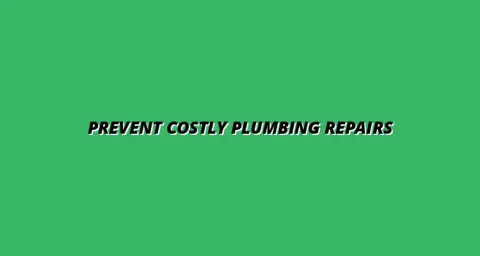
- Beginner Tips
- Feb 12
2024-12-24
Understanding plumbing systems is crucial for any homeowner or DIY enthusiast! Knowing the basic components can help in identifying issues and making informed decisions. In this section, we’ll explore the essential parts of plumbing systems, including pipes, water supply and drainage systems, and fixtures.
Pipes are the backbone of any plumbing system. They carry water, waste, and various fluids throughout your home. Understanding the types of pipes and their specific functions can help you maintain a healthy plumbing system.
There are several types of plumbing pipes, each designed for different purposes. Here are the most common materials:
Each material has its own strengths and weaknesses, so choosing the right one is essential for effective plumbing!
The size of pipes plays a significant role in water flow. Larger pipes can carry more water, while smaller pipes may restrict flow. It’s important to have the right size for each application:
Understanding how pipe size works can help prevent issues like low water pressure or clogs!
Water supply and drainage systems are essential for any home. They work together to provide clean water and remove waste. Let’s dive deeper into how these systems function.
The water supply system is responsible for delivering clean water to your home. It consists of a network of pipes, valves, and fixtures that carry water from the main supply to various points in your home. Here are key components:
By understanding this system, you can better manage your water usage and spot potential issues!
The drainage system is equally important, as it removes wastewater from your home. This system consists of pipes that transport waste to the sewer or septic system. Key components include:
By keeping your drainage system in mind, you can avoid unpleasant clogs and backups!
Faucets and fixtures add functionality and convenience to your plumbing system. Understanding their functions can help you choose the right ones for your home.
There are different types of faucets, each with its unique mechanism. Knowing the options can help you make informed choices:
Choosing the right faucet can enhance both the functionality and style of your bathroom or kitchen!
In addition to faucets, plumbing fixtures are vital for everyday use. Here are some common fixtures:
Understanding these fixtures can help you maintain a comfortable and functional home!
As a homeowner or someone handling plumbing tasks, it's crucial to know about the most common plumbing issues you might face. Whether it's a leaky faucet or a clogged drain, understanding these problems can save you time and money. At Plumb Pro Care, we often hear from clients who have issues that seem complicated but can actually be resolved with a bit of knowledge and the right approach.
Here, I’ll cover two major plumbing problems and share some tips that can help you troubleshoot them effectively. Let’s dive into the details!
Detecting a leak in your plumbing system can sometimes feel like searching for a needle in a haystack. However, there are several signs you can look for that can help you identify a leak quickly and accurately. If you suspect a leak, pay attention to:
Once you've identified a potential leak, it’s essential to determine its cause. Common causes include:
Taking preventative measures can save you from potential leaks in the future. Regularly check for signs of wear and tear and consider scheduling inspections to catch issues early!
Clogged drains are another frequent plumbing issue that can lead to frustration. Identifying the symptoms early can help you tackle the problem before it escalates. Common signs of clogged drains include:
There are several causes for clogged drains, including:
To clear clogs safely, consider using:
However, if you find yourself dealing with persistent clogs, it might be time to call in the experts at Plumb Pro Care. We specialize in addressing complex plumbing issues promptly and effectively.
Let's address some common queries we often receive from homeowners about their plumbing systems. Knowledge can empower you to tackle issues confidently. Here are a couple of key questions:
If you're new to plumbing, you may wonder how often your plumbing system should be inspected. Generally, I recommend having a professional inspection every 1-2 years. Regular inspections can catch problems early, saving you from significant repair costs later!
Another common question is, “What are the signs of plumbing system failure?” Here are a few indicators to watch out for:
If you're interested in enhancing your plumbing skills, there are plenty of resources available. Online courses and tutorials can be incredibly beneficial. Websites like YouTube offer a wealth of videos on simple plumbing repairs, while dedicated platforms provide in-depth courses.
For those who prefer a good read, consider checking out books and guides on plumbing basics. These resources can give you a solid foundation and boost your confidence when tackling plumbing challenges.
Building your plumbing skills takes time, but with practice and the right resources, you can feel more confident in handling common issues. Remember, ongoing learning is essential!
While DIY is great, don’t hesitate to reach out to professionals like Plumb Pro Care when you need assistance. We’re here to help you navigate your plumbing systems with ease!
